 |
|
Scale, Spend & Urgency
Together they are a toolkit to cool our atmosphere.
Peak Heat Days are becoming much hotter.
|
A hotter world is coming at us faster than we thought. |
Scale up solutions. Spend whatever it takes. Urgency is crucial. |
|
|
|
|
| 1 |
|
An effective plan requires 3 building blocks:
Scale, Spend and Urgency
|
|
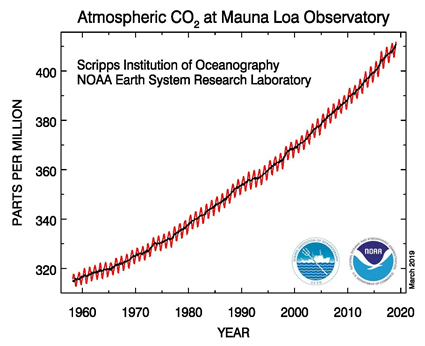
Translation text: Atmospheric CO2 at Mauna Loa Observatory. Parts per million.
Scripps Institution of Oceanography, NOAA Earth System Research Laboratory.
A chart showing the steadily increasing concentrations of Carbon Dioxide in the atmosphere (in parts per million) observed at NOAA's Mauna Loa Observatory in Hawaii over the course of 60 years. NOAA
|
Scale, Spend and Urgency
Turned into action, they can reverse our current course towards global disaster.
Rolling back the Climate Emergency requires us to make addressing
it our top
priority—as nations, and as a world. There is no partner or adversary
today
that wishes
to be on the
side of a human-made apocalypse.
In the same way that the democracies
allied
themselves
with the
Soviet Union during the war,
we can once
again
undertake
that form
of partnership
as a united world community. |
|
|
|
 "The only thing we have to fear is fear itself."
"The only thing we have to fear is fear itself."
Franklin Delano Roosevelt - March 4th, 1933
|
Embracing what works: Scale, Spend and Urgency
Are we afraid of developing large scale technical remedies to quell the Climate Emergency?
Are we afraid to think big, and are we afraid to mobilize our society to meet the challenge?
Are we afraid to "declare war" on Climate Change, and field an army of millions to fight it?
Are we afraid to commit the necessary financial resources to actually do what is needed?
Are we afraid of declaring it the foremost commitment of our governing agenda?
We were not afraid to do what was necessary during the last existential global crisis.
|
|
As was courageously done in WWII,
GOVERNMENT MUST TAKE CHARGE...
...in order to plan, produce and execute
a command strategy that insures
we do what
is necessary
to
prevent
our extinction,
and to maintain a livable planet.
Engage the private sector—
but the goals to quickly reverse Global Warming must be promulgated
by the power of governmental authority. Our survival depends on it.
|
|

World War II Liberty Ships - In just four years time, the United States produced 2,710 of these impressive vessels. Each was about 455 feet long. If all were set together stern to bow, they would stretch over 415 miles.
The United States military produced a total of 5,200
major ships in that time period.
"The B-24 Liberator long-range bomber had 1,550,000 parts. One came off the line every 63 minutes."
- PBS These –––––>
US factories manufactured 297,000
warplanes, and a total of 637,000 aircraft
by the Allies alone. American and Canadian industry built 86,000 tanks—and delivered
them across a dangerous ocean teaming with unseen submarine U-Boats.

Before there was an interstate highway system, forty thousand US made locomotives were committed to move troops and war matériel by the extensive rail network in place at that time, wherever they might be needed.
SANTA FE STEAM RAILROAD WWII COMMITMENT

70,000,000 soldiers, sailors, airmen, WACS, WAVES and WASPS participated in the war effort from Allied nations (Underlined links: Women in the US Military during WWII).
| |
In World War Two, scale was no object and unlimited funding was no deterrent to completing the mission. Urgency drove the agenda.
To reverse Climate Change, only global scale remedies will save us.
Governments need to turn off CO2 and Methane pollution everywhere as fast as humanly possible.
They will also need to legislate remedies to remove and sequester sky-borne and river-borne CO2 and Methane proliferation with the same intensity.
|
|

A refurbished Liberty Ship sends a message. Richmond Museum of History

US B-24 Liberator - A bomber an hour, 24/7. US World War II production line.
Embracing Vast Scale Climate Solutions
Large scale natural and technical solutions have the power to rewrite our future, from one of continuing environmental degradation, to one of balance in our relationship with the global climate systems on which we depend.
We might consider...
A) ...that the cost of such remedies is less a concern than the benefits to be derived from their implementation.
B) ...that the alteration of our societal priorities is essential. No priority is as crucial as reversing course, and of altering the dynamics of our warming climate.
Specifically, perhaps no goal is more important than quickly lowering average global temperatures.
World War II types of commitments to unlimited funding, to implementation of large-scale technical and natural remedies, and enshrining these values in legislation and treaties is a clear priority. WWII taught us that prioritizing mass production at massive scale was a vital key to winning the war.
Today, unlimited mass production of MegaScale Fire Drones and 1.5 billion Carbon Capture Cars are now also what is needed—just as fast as we can do it.
And just as importantly, serious attention must be given to the disastrous unbridled proliferation of Methane in our North Polar Regions. Both excess Carbon Dioxide AND circumpolar tundra Methane release must be addressed to insure our planetary viability.
Please drill this into your memory and share it with your friends, family and like-minded contacts without shame:
Methane is 80 times more potent in its current and ongoing planetary destruction activities than is CO2.
In World War II, Supreme Allied Commanders were empowered to mandate all aspects of effectively pursuing a global war. Tackling the Climate Emergency might require just such an approach in order to cut through bureaucracy, and to be maximally effective in its goals.
Had the Allies lost WW II, that might have been the end of democracy. If we do not address the Climate Emergency, it could mean the end of the world as we know it. That is a stark statement with no way to sugar coat it.
CO2 is invisible. Peat fields are now beginning to release their Methane in the tundra far away, but there's no newsreel from the front.
It behooves me and you to challenge government to address these issues. They are real; they are dangerous beyond imagining; choose to not forget this D
"Global governments and major polluters must take urgent action to develop technologies which can capture and store Carbon emissions or it will be 'virtually impossible' for the world to meet its climate targets, according to the International Energy Agency." THE GUARDIAN
As "Democracy is the worst form of government—except for all the rest," then so too "Expensive vast-scale climate solutions are the worst remedies—except for all the rest."
There are many voices out there that claim Climate Change is a 'hoax'. Yet, one only need look at the daily headlines to know how pervasive and devastating are the detrimental effects of a warming globe.
One only need experience how hotter our everyday life has become to know that action and not nonsense are the order of the day.
Climate Change is real.. it's here now.
Large scale solutions can reverse it. |
|
|
|
Peak Heat Days are becoming much hotter. |
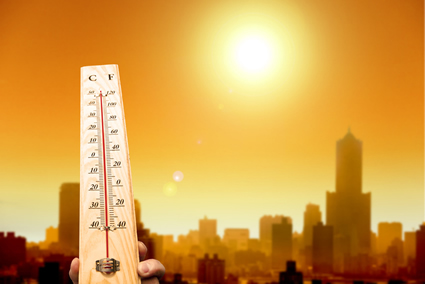
F = Farenheit and C = Celsius
Antarctica, Feb., 2020: 65ºF/8ºC.
- It is the 2nd hottest temperature ever recorded there.
In July of 2019, France and Germany experienced their highest temperatures ever recorded. Paris sweltered at 116ºF/46ºC.
THE GUARDIAN
Peak Heat Days in California and the western portion of the United States and Canada in 2020 and 2021 smashed all previous records.
"On September 6, 2020, around 1:30 p.m., Los Angeles County recorded its highest temperature ever at 121°F/49°C at Woodland Hills. Several other cities, like Paso Robles and Palmdale, also hit record highs." EARTH OBSERVATORY - NASA
June 16th, 2021 "Phoenix hit 115ºF/46ºC on Wednesday, (and for the first time ever) the second day in a row..." AZ CENTRAL
Portland, Oregon - June 21st, 2021 - 117ºF/47ºC NYT
Lytton, British Columbia - Tuesday, June 29th, 2021 - 121ºF/49ºC — "The hottest moment ever seen anywhere in Canada since record-keeping began." FORBES
And "In August 2020, Death Valley reached 130ºF/54ºC—possibly the highest temperature ever reliably recorded on Earth." EARTH OBSERVATORY - NASA
2020 - "European scientists reported that November’s global temperatures were the highest ever, surpassing the previous records, set in 2016 and 2019". NY TIMES
But "July 2021 is the hottest month on record, period. 'In this case, first place is the worst place to be.' NOAA Administrator Rick Spinrad said in the announcement of this grim record." STATISTA
And "The United States had its hottest summer on record this year, 2021, narrowly edging out the previous milestone that was set 85 years ago during the Dust Bowl. [...Another time we were monumentally careless with respect to the natural world.]
NOAA, The National Oceanic and Atmospheric Administration, announced Thursday that the average temperature this summer — 2021 — for the contiguous U.S. was 74 degrees Fahrenheit, or 2.6 degrees warmer than the long-term average.
The heat record caps off a season full of extremes, with parts of the country experiencing persistent drought, wildfires, record-breaking heat waves, hurricanes and other extreme weather exacerbated by climate change." NBC NEWS
"The megadrought that has gripped the American Southwest since 2000 has reached another milestone, and it’s hardly a cause for rejoicing. A group of scientists who study past, present and future climate in the region have found this two-decade period is now the driest in at least 1,200 years, and say climate change has a lot to do with it."
NY TIMES - HENRY FOUNTAIN - 2022
Without remediation, there is nothing to stop these trends. Peak Heat Day temperatures in the not too distant future may begin to exceed the limit of human tolerance.
It will take only a day or two of literally unbearable heat in any given year to paralyze a great city, and deliver heat prostration and death to millions. Electric grids will fail, air conditioners will stop functioning, and people will have no avenue of escape. SCIENCE MAGAZINE
"Already we’ve seen profound heatwaves and profound death counts to match. They’ve become twice as common in the past few decades, according to some estimates, and climate models predict the trend will only accelerate through the rest of the 21st century—especially if we fail to keep global warming to 1.5 degrees Celsius (2.7º F) above pre-industrial levels, as the International Panel on Climate Change has urged." DISCOVER
That reddish-brown mass is Antarctica... 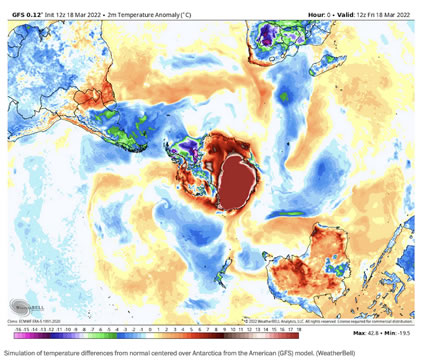
...and in March 2022 it was hotter than
a Summer's day in the Sahara Desert.
"The coldest location on the planet has experienced an episode of warm weather this week unlike any ever observed....
with temperatures over the eastern Antarctic ice sheet soaring 50 to 90 degrees above normal. The warmth has smashed records and shocked scientists.
'This event is completely unprecedented and upended our expectations about the Antarctic climate system.' said Jonathan Wille, a researcher studying polar meteorology at Université Grenoble Alpes in France, in an email." WASHINGTON POST • MARCH, 2022
Plantless deserts grow at high speed.
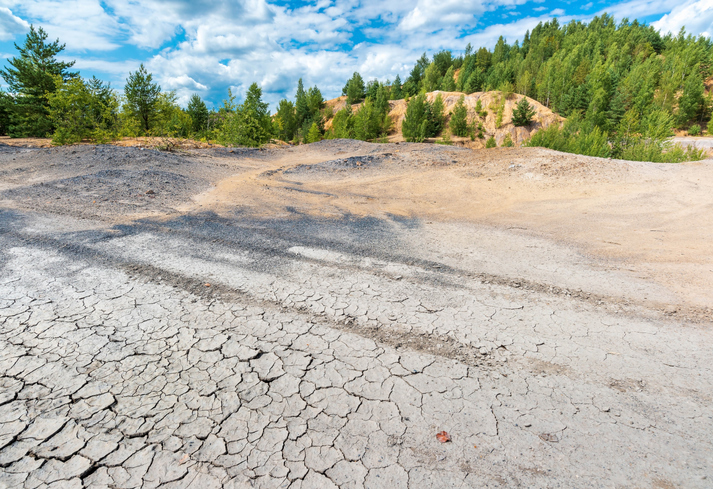
Desertification due to Climate Change heat
significantly enlarges the global desert range every day — with no end in sight. UNITED NATIONS
The Sahara Desert is expanding at the rate of 7,600 square km / 3000 square miles per year; that is approximately twice the area of the entire US state of Rhode Island.
A Runaway greenhouse possibility?
As ambient global temperatures rise, the cycles of warming cause more CO2 from wildfires, on average, to be released into the atmosphere than the previous year. PNAS
Imagine if global warming temperatures increased by just 10%. It's not impossible, yet we would have no answer for that calamity.
Though there are many projections, no one really knows for sure how fast they will rise in the decades to come, as there are just so many factors and variables.
Climate scientists are sure of one thing: They are rising, and we are nowhere close to implementing scalable solutions to the issue.

There's more Carbon Dioxide (CO2) in the atmosphere today than at any point in the last 800,000 years. CLIMATE.GOV
CO2 released from pollution sources all over the world and the raging wildfires of 2018 all added to the prior total, which set the stage for the spectacular Firestorms which occurred in 2019, 2020, 2021, 2022, 2023... and now in 2024.
Those, in turn, released so much CO2 that the next few years will do the same, in a viscious cycle with curves more and more diverting from the arithmetic to the exponential.
Tell everyone you know that this coming Summer will be hottest ever recorded.
Tell them we're just not acting fast
enough
to reverse this ominous trend.
Speak up... and please do it with
heart,
sensitivity... and with honesty.
|
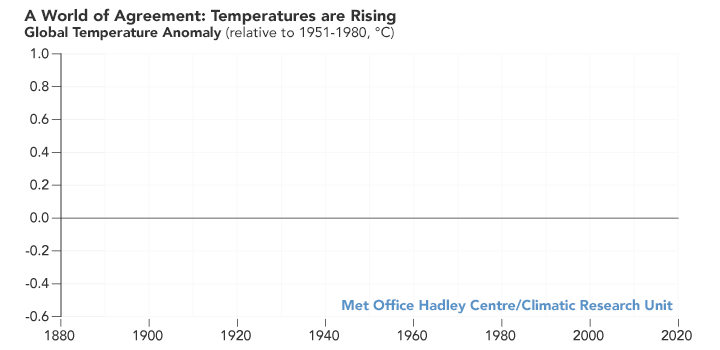
EARTH OBSERVATORY - NASA
Translation text: A World of Agreement: Temperatures are Rising
Global Temperature Anomaly ( relative to 1951 1980, ºC )
Our society is in existential danger.
Rising temperatures are beginning to overwhelm every aspect of our lives. As the saying goes... "There will be nowhere to run, nowhere to hide."
It may be time to recognize that we are living in a paradigm that does not allow us to accurately forecast the rate of rising temperatures, or any number of variables about specific climate projections.
ADVANCING EARTH AND SPACE SCIENCE
Perhaps a paradigm shift is required that says, in effect... "The future of Climate Change is generally worse than our most careful science and our best efforts are able to predict."
_____________________________________
And then there is the Arctic...
"The Arctic may have crossed a key threshold, emitting billions of tons of Carbon into the air, in a long-dreaded climate feedback loop." WASHINGTON POST
With ambient temperatures undeniably rising, CO2 is considered by some scientists to be a concern for generating a Runaway (i.e. unstoppable) greenhouse scenario.
CLIMATE TIPPING POINTS
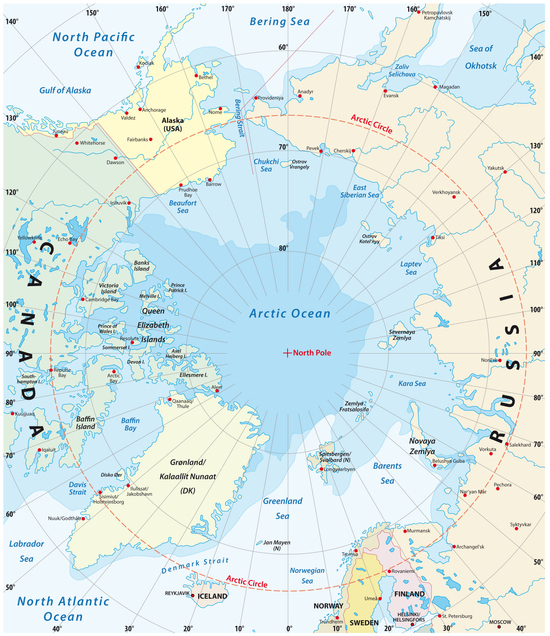
_____________________________________
And then there is Methane...
Atmospheric Methane (CH4) Increase 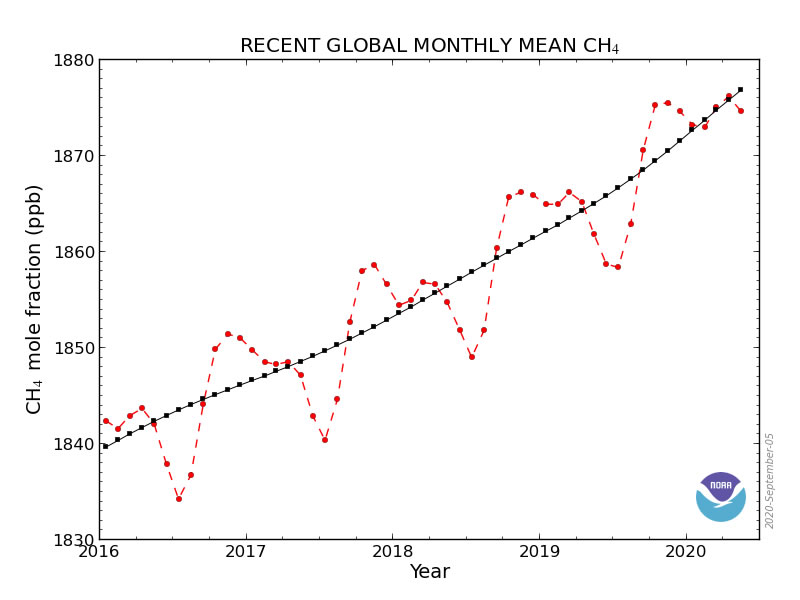
For translation: Atmospheric Methane Increase, Mole Fraction.
Please note that the vertical axis is in Methane mole fractions, and not dates.
NOAA
Methane (CH4) release is a dramatically more potent driver of such an event than is CO2.
There are many natural sources of Methane besides the melting tundra. However today...
... Methane proliferation is caused by an atmosphere that is heating due to human introduction of CO2 into that atmosphere.
The Arctic contains countless gigatons of potential Methane—and that Methane has now actually begun to be released into our atmosphere in ever increasing amounts.
METHANE IS 80 TIMES MORE POTENT THAN IS CO2 / CARBON DIOXIDE.
With every passing year, the amount of Methane proliferation becomes greater and greater. The amount of that introduction into the sky is staggering.
Some climate scientists play down the dangers of a global Methane release— but most climate scientists are deeply concerned about it.
NATIONAL SNOW & ICE DATA CENTER and more generally SCIENCE NEWS
Brand new to the alarming list of Methane-release sources are the "thawing rock formations in the Arctic permafrost." Methane release in this scenario is “potentially in much higher amounts” than in other origins. WAPO
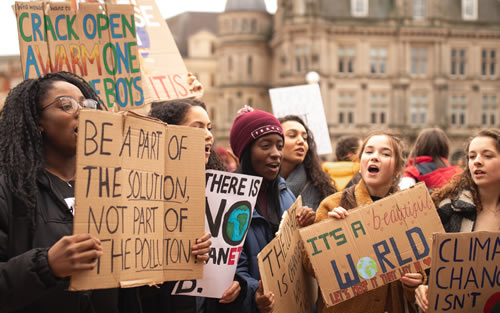
THE BIG SIGN LOWER LEFT SAYS:
"Be a part of the solution, not part of the pollution."
Photo by Callum Shaw on Unsplash
_____________________________________
When it comes to human heat tolerance, there's an important distinction between 'dry bulb' and 'wet-bulb' temperature measurements you should know about.
"The temperature you see in weather forecasts is known as dry-bulb temperature, which only measures heat. But scientists often think in terms of wet-bulb temperature, a combined measure of heat and humidity. As the name  suggests, it's what a thermometer reads when wrapped in a wet cloth. Essentially, the wet-bulb temperature simulates a sweating human body, making it a better indicator of how well we can handle the air in question. suggests, it's what a thermometer reads when wrapped in a wet cloth. Essentially, the wet-bulb temperature simulates a sweating human body, making it a better indicator of how well we can handle the air in question.
Sweating gets steadily harder as the wet-bulb temperature rises, but experts agree that 95°F, or 35°C, is the ceiling. Consider the air temperature of Phoenix, Ariz., combined with the humidity of Washington, D.C. At that point, sweat is useless. Within hours, death by overheating is certain — even for a healthy adult, sitting still and naked in the shade with... plenty of cool water to drink." DISCOVER
Clouds may vanish forever.
Blue skies will become a memory.
Future skies will turn a hazy white.
"Recent climate models project that a doubling of atmospheric CO2 above pre-industrial levels could cause temperatures to soar far above previous estimates.
A warming earth, researchers now say, will lead to a loss of clouds, allowing more solar energy to strike the planet."
FEB. 2020 • YALE UNIVERSITY
On the other hand, our own senses are telling us that during our new heatwaves, more clouds—and clouds of every type in the sky together all at the same time—are actually proliferating. That might very well be caused by excessive heat launching more water vapor skyward... and then forming clouds. 2024
 ___________________________________ ___________________________________
The Summers of 2022 and 2024
The Summer of 2022 was the year the climate destroying chickens came home to roost— and with a mighty vengeance.
The world over, temperatures soared way above previous normal benchmarks.
People sweltered, and all over the world, people perished due to the unremitting heat.
In India and China, in Great Britain and France, in the United States and Canada, in Japan and Australia... and everywhere in between, the oppressive heat was deadly.
Tens of thousands of human beings perished as they succumbed to that awful and unforgiving heat... all over the world. .....And 2024??
The Summer of 2024 is now considered to be the hottest summer ever recorded. Our global atmosphere was dangerously hot in most areas of the planet...
And finally, no one could deny that Climate Scorching had both arrived, and would be markedly hotter with every coming year.
It is so important to repeat: Next year will be worse, and the years after ever more deadly.
Let's get our heads out of the sand, and get to work on strategies to reverse this plague.
|
|
|
130ºF
 54ºC 54ºC
120ºF
 49ºC 49ºC
110ºF
 43ºC 43ºC
100ºF
 38ºC 38ºC
90ºF
 32ºC 32ºC
80ºF
 27ºC 27ºC
70ºF
 21ºC 21ºC
60ºF
 16ºC 16ºC
50ºF
 10ºC 10ºC
40ºF
 4ºC 4ºC
30ºF
 -1ºC -1ºC
20ºF
 -7ºC -7ºC
10ºF
 -12ºC -12ºC
0ºF
 -18ºC -18ºC
-10ºF
 -23ºC -23ºC
-20ºF
 -29ºC -29ºC
-30ºF
 -34ºC -34ºC
-40ºF
 -40ºC -40ºC
-50ºF
 -45ºC -45ºC |
"A cheap, low-tech solution for
storing
carbon may be sitting in the dirt..."
|
|
Quelling the Climate Emergency
The question is not "How much will this cost?" but
"What is wanted and needed to completely reverse course?"
|
 Unlike the rapid and dramatic events which precipitated World War II, Climate Change is a slow-moving disaster unfolding over decades.
Many—if not most of us—feel we can ignore getting involved; we shrug our shoulders and feel we have no choice but to "put it off." It seems as if "no one is in charge," which brings a sense of helplessness and resignation. Unlike the rapid and dramatic events which precipitated World War II, Climate Change is a slow-moving disaster unfolding over decades.
Many—if not most of us—feel we can ignore getting involved; we shrug our shoulders and feel we have no choice but to "put it off." It seems as if "no one is in charge," which brings a sense of helplessness and resignation.
There is a daunting litany of apparently insurmountable barriers to a global scale implementation of potent solutions. Some of these are a wariness regarding the cost,
magical thinking that some other way—a less expensive way?—will come along to save us, or someone else is fixing the issue and "they" will handle it.
The Climate Emergency is the most important issue facing humanity.
Consider that if we do not make the Climate Emergency our top priority now, the amount of treasure we will be required to spend down the road will dwarf the cost of current proposals. The public deserves to be informed of just how serious this crisis is—and that their political participation is crucial in order to produce a positive outcome.
We might offer the employees who perform fracking and oil / gas extraction—as well as the local outfits and powerful multi-national companies which employ them—the opportunity to transition to much needed climate-related work at attractive pay scales. Those provisions might be both generous and compassionate. It is not helpful to demonize those industries and their employees. If we are serious about creating a paradigm shift, then we might consider that everyone is invited to come along for the new opportunities a climate sensitive model will create. Yes, if you can't get results with an open, sincere and generous hand, then invoke governmental power.
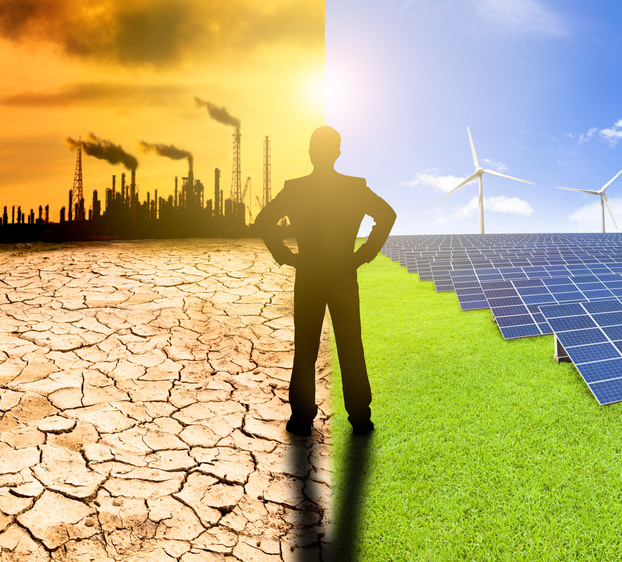 Even if private enterprise is willing, it is likely to be unable to address its corner of the Climate Emergency on its own. Even if private enterprise is willing, it is likely to be unable to address its corner of the Climate Emergency on its own.
A partnership of industry and government—based on the World War II transformation and repurposing of industry model—will be required to set meaningful, serious and important goals and timelines in order to give us a fighting chance.
Legislate CO2 Pollution 'Out of Business'
It may not be good enough to only offer green alternatives to vehicles, homes and buildings which currently utilize fossil fuels, to planting trees, and to drawing excess CO2 out of the sky.
It is time to legislate sunset dates for specific pollution classes, in the fastest timelines possible and with enough enforcement to see to it that the job gets done. We need to recognize that both tracks are required to get this ship off the shoal.
The lowest hanging fruit are the CO2 spewing cars and trucks—1.5 billion or so which are releasing CO2 into the sky every day. The first level of legislation might set a date for discontinuing the manufacture and sale of new non-green vehicles—for example, a gradual 20% draw-down per year, and a complete halt to their production within five years. Some will say that is an unrealistic timeline. There is no doubt that that is true—as long as we don't consider what we were able to accomplish in three short years time during World War Two in regards to production priorities.
The second level would be the scaling up of Carbon Capture Cars (CCC)—those that remove CO2 as they cruise the highway. With mandatory implementation, their cost will drop considerably, and governments could do all they can to make the transition economically feasible for trade-ins.
The third level would be the retrofitting of all non CCC vehicles on the highways within rapid timelines. That activity would be a parallel endeavor of almost equal importance.
The fourth level would be the recognition that our global rivers naturally carry staggering amounts of CO2... and which are relatively easy to concentrate and sequester. By choosing to go that route, we would blunt the dangers of its release, and it would give us another timline breather with which to handle our proliferating human-produced and generated CO2 and Methane.
Expand the number of "machines" that remove CO2 from the sky, all already at unprecedented scale. Consider the atmospheric CO2 removal power of two billion cars, trucks, buses, RV's, ships, locomotives, factories, homes and all the world's skyscrapers as well. That game plan might just be the fastest method to meaningfully slow CO2 introduction into the sky, and to focus on removing monumental amounts of CO2 too.
Invite your team to think big regarding the number of modalities we actually have at our disposal to reverse Climate Scorching, were we to simply open our eyes, wake up, and start using them. PLEASE! Embrace all the options out there... Support even those whose ideas may seem non-starters. We don't know what we don't know... everyone's "crazy" ideas are welcome. Ask that every idea, prototype, or factory production product gets its day in court, its opportunity to be heard, and a serious inquiry into its viability.
As the outmoded Carbon Dioxide emitting vehicles are retrofitted, and gradually leave the road over a ten-year draw-down, the Carbon Dioxide gulping CCC's will gradually and resolutely take their place. And when implementation is finally complete, with all outmoded vehicles off the road, our brand new CCC vehicles will continue to perform their constant and unstoppable removal of CO2 day and night—for decades—and do it anywhere in the world there is a road, driveway or highway.
Won't consumers object to an automobile which is tasked with CO2 removal and doesn't appear to have any great personal benefit to its owner? Maybe most won't, and it's likely many might. Yet, the history of the automobile is replete with mandated technological improvements—consider lead-free fuels, Dole lights, head rests (to prevent whiplash), safety seat belts—and even turn signals.
Skyscrapers or homes utilizing fossil fuels can be included in this largest scale proposal to support green heating and cooling methods. This aspect of Climate Change is one that is rarely addressed, or even discussed—yet the sheer quantity of CO2 released from buildings in the US, for example, is just a little less than half that of autos and trucks. EPA Governments can legislate, provide financial support, and greatly scale up 100% green methods of heating, while at the same time adding sufficient CO2 Scrubbers such that entire buildings particpate in CO2 extraction.
New York City — "Nearly 70 percent of the city’s total Carbon emissions come from buildings.
A project to retrofit nine buildings with green technology is pioneering a new solution." NY TIMES
Why should we consider more than one Climate Emergency solution?
If Fire Drone technology and planting a trillion trees could solve the CO2 issue, what then is the purpose of CCC vehicles, CO2 storage silos, splitting CO2, or other similar solutions?
Consider the possibility that one plan or another might be blocked by local or national intransigence or red-tape.
 Given the existential nature of the threat, positing and implementing many solutions gives us the edge we will need to survive. Given the existential nature of the threat, positing and implementing many solutions gives us the edge we will need to survive.
Include the citizenry in the conversation. Even if you are not a scientist or engineer, everyone's voice is still needed to hold politicians, corporations and governments feet to the fire.
Apart from horrifying news regarding the endless climate disasters, distributing information about real-world solutions being planned or already implemented might engender stronger commitment, and more robust political support.
We don't have to settle for the "fog of war" mentality that the issue is too big, too costly or beyond our control. Propaganda stark and subtle churns out daily by those who benefit from the status quo; we can learn to publicly call it out.
Lets do the right thing.
You've heard this, and might've even thought it yourself: "It's a little hotter, and there's not much I can do about the animals, birds, insects, plants, corals and rain forests that are perishing daily. It's all so big, and there are no remedies big enough to handle it all, and to come to our rescue."
"Rhinos, elephants, whales and sharks — the list of endangered species is long and depressing. But it’s not just these big, beautiful, familiar animals at risk. Earth is hemorrhaging species, from mammals to fish and insects. The loss of biodiversity we’re facing right now is staggering, thanks to habitat loss, pollution, climate change and other calamities."
Read about ongoing and future mass extinctions here - DISCOVER
Fixing the problem is not easy, but it is doable:
Prepare for the upcoming years and plan out how we will adapt to a hotter world. Implement a 95% halt to anthropogenic CO2 emissions; remove and decommission the excess already in the atmosphere—and possibly the excess heat in the oceans too—as fast as possible. If these were our #1 commitments, then implementing these strategies will go a long way to reversing course.
The state of science, technology, and our societal capacity for innovation can solve the Climate Emergency now in progress. We can rise to the occasion, and fight the good fight once more.
Skin as thick as the bark of a pine.
"Seven generation stewardship is a concept that urges the current generation of humans to live and work for the benefit of the seventh generation into the future. It is believed to  have originated with the Iroquois – Great Law of the Iroquois – which holds appropriate to think seven generations ahead (about 140 years into the future) and decide whether the decisions they make today would benefit their children seven generations into the future. have originated with the Iroquois – Great Law of the Iroquois – which holds appropriate to think seven generations ahead (about 140 years into the future) and decide whether the decisions they make today would benefit their children seven generations into the future.
It is frequently associated with the modern, popular concept of environmental stewardship or 'sustainability' but it is much broader in context "in ALL of your deliberations ..."
We do not have the right to destroy the natural world, the oceans, the forests, and the habitats of a myriad of plants and animals. We do not have the right to poison our atmosphere, and leave our children a smoking ruin of a planet. Our portfolios, our bank accounts, and our retirement savings are important. Yet those personal commitments will mean nothing if we don't reverse the rate that CO2 and Methane are being injected every second of every day into the sky.
Communicating the dangers that confront us is a high priority. Real-world approches might be considered. A continuous stream of specific-issue climate objectives could be inserted into Radio/TV/Print/Online commercials and public service messaging. We can field messages that allow people to grow, understand and re-commit to principles consistent with shaping a healthy future.
"In every deliberation, we must consider the impact on the seventh generation...
even if it requires having skin as thick as the bark of a pine."
ITALICIZED TEXT IN THE TWO SECTIONS DIRECTLY ABOVE - WIKIPEDIA |
|
|
|
Embrace as many solutions as possible..
then ramp up the ones that work.
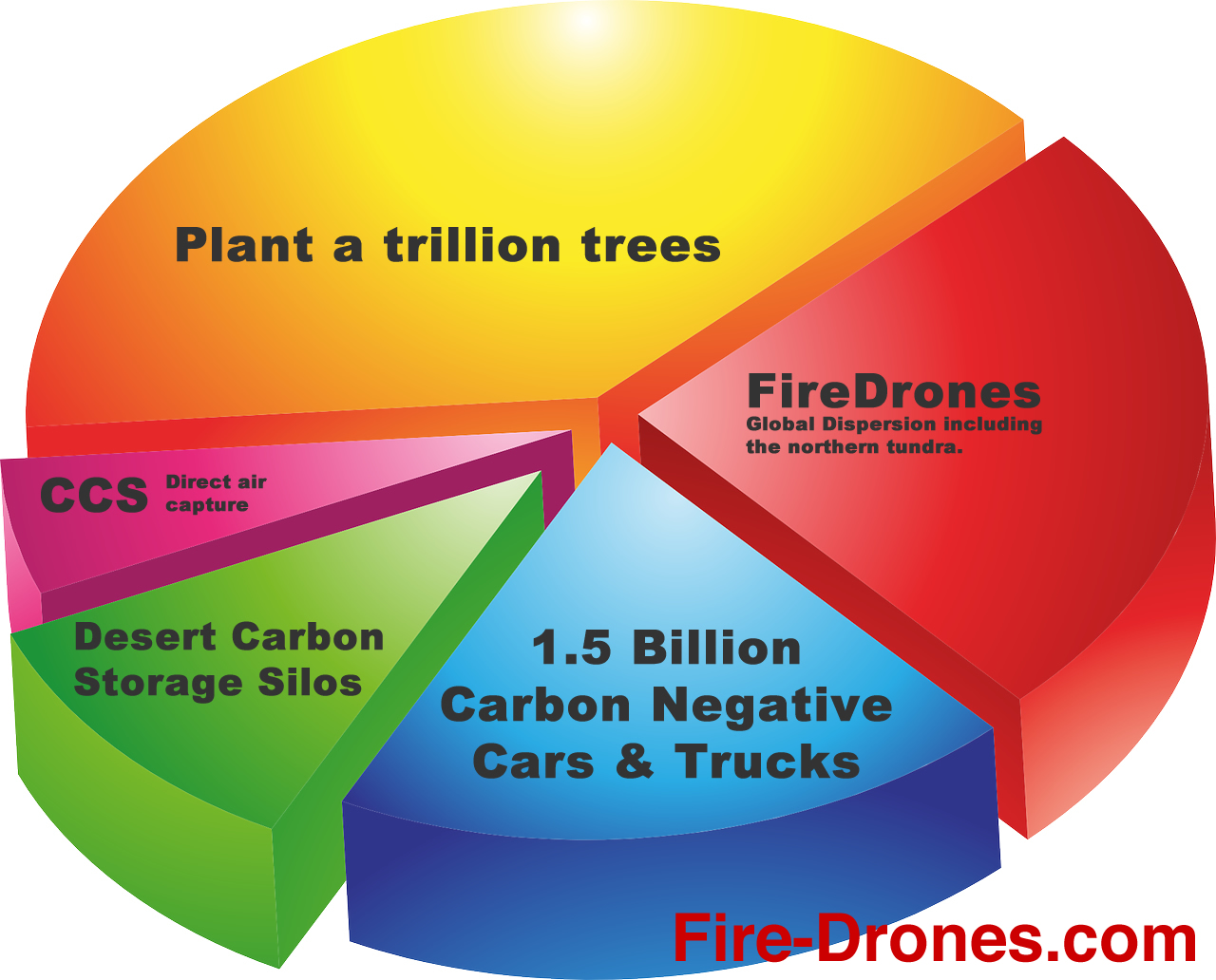 Image by OpenClipart-Vectors from Pixabay
Image by OpenClipart-Vectors from Pixabay
The pie chart gives you the idea.
The actual number of solutions we may need is likely far greater.
|
Scale |
Global Climate Emergency solutions will be implemented on unprecedented scales in order to be sufficient to reverse our planet's warming. |
Spend |
Financial resources will be allocated that are equivalent to the Allied World War II ethos: in order to win the fight, we will borrow and spend whatever amount of funding is required. |
Urgency |
The proverbial clock is ticking. The threat we face is as great as the World War II challenge. Then, the choice was between democracy or tyranny. Today, it is between survival—of our civilization, our children, our planet and all the countless billions of living creatures on it—or apocalypse. |
|
|
| |
|
Are our forests far away?
They are as close as our next breath.
The Amazon, and all of the world's trees
and forests do something truly amazing:
They breathe in Carbon Dioxide (C02),
and breathe out newly minted Oxygen (O2).
( Nature designed you to do just the opposite! )
Without our world's forests, and without
the Amazon, the amount of natural Oxygen
production will fall precipitously, and the
result will be a global atmosphere that may
just become insufficent for... breathing.
Carbon Dioxide & Methane proliferation
into our atmosphere is the challenge of
our age... and precious time is running out.
Without making it the challenge of our
age, we will all most certainly perish.
We live in a world where most of us think
it's not that bad, and we'll somehow manage.
The explosion of CO2 and Methane into our
sky is not a fairytale; it's not a story; it's
not a lie, and if ignored it will surely be
at our civilization's great peril.
CO2 / Carbon Dioxide proliferation causes
continually rising atmospheric temperatures.
That dynamic is also now in the nascent
process of releasing untold amounts of
Methane in the Northern Tundra.
The more Methane released will cause
atmospheric heat generation to release
more and greater amounts of Methane
to fill our Planet Earth's delicate sky.
That is THE most dangerous vicious
cycle our civilization must contend with...
and precious time is of the essence.
Methane is the simplest hydrocarbon,
consisting of just one carbon atom...
...and four tiny hydrogen atoms.
Methane is also an amazingly and
ferociously potent Greenhouse Gas.
Methane is produced by various elements
in the soil itself, as the Tundra's vast
Permafrost warms sufficiently to allow it.
Methane is 80 times more potent than CO2.
Let's make that the most important number
we choose to not forget regarding our future.
And, the shear amount of that potential
release of Tundra-formed Methane is indeed
sufficient to destroy all or most life on earth.
An achievable goal though is relatively simple:
LET'S BEGIN REMOVING CO2 FROM THE SKY...
NO MATTER HOW MUCH IT WILL COST,
AND LET'S LEGISLATE A COMPLETE END TO
HUMAN-GENERATED CO2 INTRODUCTION
INTO OUR PRECIOUS SKY.
For example, legislate and demand that
factories, homes, vehicles, and anything that
emits atmospheric CO2 must grind to a halt.
CO2 ? Hey, weren't we just talking about
the off-the-charts dangers of Methane??
The distinction between the two is this:
If we don't begin removing CO2 from our
global atmosphere as fast as humanly
possible, and if we don't stop blasting
it into the sky everywhere, then the Methane
now forming in the ground, in and under the
Permafrost in the vast Northen Tundra, will
inexorably rise up into the atmosphere...
as all the vast Permafrost begins to thaw.
The ferocious tornados we now see on the
news every day of our warming atmosphere
is the unassailable evidence that common
sense, climate action, and massive,
overwhleming intervention are now
required to protect our future.
It doesn't matter where on the planet we
remove CO2. However, it most certainly
does matter if we don't or we won't prevent
the Northern Tundra from melting and
releasing its mighty planet-killing Methane.
We can deal with the CO2 if we have the
political will, and if we make this
conversation paramount everywhere we go.
There are truly no more important
goals for humanity than those.
WE DON'T HAVE 20 YEARS TO FIX THIS...
The RATE of CO2 / Methane release into
the sky is not only increasing, the RATE
of the RATE is also increasing.
We have perhaps 5 to 10 years max
to completely reverse course.
Imagine an atmospheric heating curve that
becomes dramatically steeper every year.
IF we don't deal with CO2 proliferation
now, as the thawing takes place in the
Northern Tundra, the ensuing heat will
very likely be lights out... all over the world.
No one has a crystal ball as to the 'point of
no return timeline.' However, it is entirely
possible that, without utilizing every
resource we have, and mobilizing our
governments everywhere to take action,
the 'lights out' date for our world is perhaps
a mere five to ten years from today, 2024.
Talk about the existential danger that Methane
release in the Northern Tundra poses for our
entire civilization, and our entire planet.
Let's stop pretending our voice won't matter.
It is in fact the only thing that really will matter.
Be a part of the solution, and get involved.
Can you please consider getting onboard??
|
|
| |
|
CNN • August, 2024
American cities are getting unbearably hot.
These ones are roasting the most...
4:00 AM EDT August 13, 2024
No, it’s not your imagination —
summers in the US really are getting hotter.
And longer.
Human-caused climate change is turbocharging heat all over the country, but it’s most intense in cities, where more than 260 million Americans live. That’s because buildings, roads and sidewalks radiate more heat than grass and trees, in what’s known as the urban heat island effect, which can add as much at 20 degrees Fahrenheit to urban temperatures.
All of the country’s 50 most-populated cities have gotten hotter over the past half century, and all but three are experiencing more “extremely hot” days above 95 degrees, according to a data analysis by the International Institute for Environment and Development, shared exclusively with CNN.
Here’s which cities are on the frontlines.
Summer 2024 has been a scorcher.
Summer this year has been punctuated by record-breaking temperatures, blackouts and train delays as tracks overheated, warped and threatened derailment. In one Arizona county, hundreds of people are believed to have died from heat-related causes. Paramedics in Phoenix now travel with body bags filled with ice in which to immerse people suffering heat exhaustion or heatstroke.
If you take the country’s 50-biggest cities and add up the number of days above 95 degrees, there have been at least 1,071 this summer — 161 more than the average over the past decade for the same period.
Those days aren’t spread evenly across cities. Las Vegas and Phoenix, for example, have both experienced more than 80 days over 95 degrees this summer, while coastal cities in California, like Los Angeles and San Fransisco, have been spared entirely.
Washington, DC, and Baltimore are both experiencing their hottest summers in at least a decade. Each has recorded at least 18 extremely hot days this year.
Last summer, they logged just three and five, respectively through the end of July.
In terms of which cities have seen the biggest increase in days above 95 degrees, Las Vegas comes out on top. It has roasted this summer, with 83 days — 18 more than its average over the past decade — and every July day in the city was above 105, topping out at 120.
San Antonio, Texas, experienced 54 extremely hot days, 16 more than its 2013-to-2023 average, while Nashville, Tennessee has logged 23, also 16 days above average.
IT'S NOT JUST THIS PAST SUMMER...
There has been a leap in the number of extremely hot days in the past five decades: from 1,064 to 1,857 among the 50 most populated cities. That’s a jump from an average of 21 days per city to 37.
“The overall trend is clear: major American cities have experienced a significant rise in the number of extremely hot days,” said Tucker Landesman, a senior researcher with the International Institute for Environment and Development.
More days of extreme heat and temperatures rising by a few degrees may sound manageable, but even small increases, especially when coupled with a rise in humidity, can raise the risk of serious health emergencies, like heat exhaustion and even heatstroke, which can be fatal.
And those impacts are having an outsized impact on vulnerable groups.
“Recent years have proved heat is a killer and this can be particularly true for children, the elderly, and people on lower incomes or who live in substandard housing,” Landesman told CNN.
“High temperatures are also linked with premature and still births, and other health problems during pregnancy.”
HEAT IS BIGGER IN THE BIG STATE OF TEXAS...
Over the long term, big cities in Texas, Arizona and inland California have been worst-hit, in terms of the rise in extremely hot days.
Of the 10 cities that recorded the biggest increase since the mid-70s, seven are in Texas.
In 1976, San Antonio experienced one week’s worth of extreme heat, but by 2023 it had jumped to nearly 13 weeks — an increase of 1,276%.
Austin went from less than three weeks to more than 12, while Houston went from just over one week to more than seven.
Beyond climate change, parts of Texas have become more vulnerable to extreme heat in the past five decades because its cities have rapidly sprawled and its urban centers have become more dense. And populations there are still growing fast: In 2023, San Antonio added 22,000 people to its population, more than any other city, followed by Fort Worth, which added more than 21,000.
In Austin, city officials are aiming to cover 50% of the city with tree canopy by 2050 to fend off some of the urban heat getting trapped in its concrete and asphalt.
“Too often, heat is talked about as just ‘the weather.’ But we’ve built our cities to be heat islands, often much hotter than the surrounding land, which exacerbates the effects of climate change,” Landesman said. “This effect can be especially acute in low-income areas that lack quality green space.”
Outside Texas, but also in the top 10 cities for the greatest rise in extremely hot days, is Tucson, Arizona, which went from 79 days to 132, as well as Fresno, California, from 60 to 92, and Denver, Colorado, from just 5 days to 31 — that’s a leap from one work week of extreme heat to six full weeks.
Of the 50 cities, only three — Los Angeles, Omaha and Kansas City — did not experience an increase in extremely hot days over the five-decade period.
ARIZONA's CITIES ARE NOW THE HOTTEST IN THE USA...
Arizonans living in urban centers are used to the extreme heat of the desert, but like much of the country, they too are now having to adapt to even longer periods of heat.
Phoenix, Mesa and Tucson have the most days of extreme heat. Phoenix reached 158 days on average in 2023 — three weeks more than 50 years ago and 40% of the year.
Tucson’s increase was Arizona’s biggest, with 53 more extremely hot days — or seven more weeks.
SUMMERS ARE GETTING M-U-C-H LONGER
If you’re one of those people who thinks Summer hasn’t started until you hit a truly hot day, then you need to know that Summer's are starting earlier and finishing later.
Your kids are wondering when it will snow... they've seen it on TV. But as sadly as any blow given to kids just starting out in life... it's actually true.
The 'Snow's of YesterYear' are by and large gone in vast areas of our planet that once joyfully accepted their arrival.
Yes... it's true... heat indexes in November remind
elders of their childhood, when snows and
blizzards were to be expected, and to be frolicked in.
|
|
|
| |
|

Please consider sharing this website with all those in your circle
whom you feel may be interested or might gain value from.
|
|
|
|
|
 |